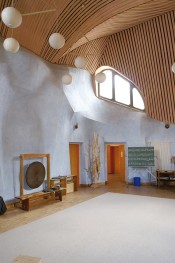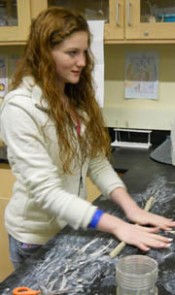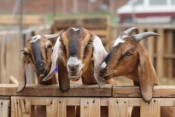 Waldorf Training in Australia
Waldorf Training in Australia Apply Today: New Cohort Starts Nov. 2025
Apply Today: New Cohort Starts Nov. 2025
 ~ Ensoul Your World With Color ~
~ Ensoul Your World With Color ~ Everything a Teacher Needs
Everything a Teacher Needs Jamie York Books, Resources, Workshops
Jamie York Books, Resources, Workshops Middle School Science With Roberto Trostli
Middle School Science With Roberto Trostli Roadmap to Literacy Books & Courses
Roadmap to Literacy Books & Courses Great books for Waldorf Teachers & Families
Great books for Waldorf Teachers & Families Train to Teach in Seattle
Train to Teach in Seattle Bay Area Teacher Training
Bay Area Teacher Training Bringing Love to Learning for a Lifetime
Bringing Love to Learning for a Lifetime Immersive Academics and Arts
Immersive Academics and Arts Full-Time Teacher Education
Full-Time Teacher Education Quality Education in the Heartland
Quality Education in the Heartland Flexible preparation for your new grade
Flexible preparation for your new grade Summer Programs - Culminating Class Trips
Summer Programs - Culminating Class Trips The Journey is Everything
The Journey is Everything Association for a Healing Education
Association for a Healing Education Caring for All Stages of Life
Caring for All Stages of Life Space speaks. Its language is movement.
Space speaks. Its language is movement. Waldorf-inspired Homeschool Curriculum
Waldorf-inspired Homeschool Curriculum Transforming Voices Worldwide
Transforming Voices Worldwide
Would you like to become a sponsor?
Waldorf News

"Siri, What Is an Ear Infection?"
September 9, 2014
I’ve been a pediatrician for 20 years, and I thought I’d seen it all. But not long ago when a father brought his 2-year-old into my clinic, something happened that has me deeply concerned. Upon entering my examining room, I found father and son sitting together, eyes downcast, each silently scrolling and tapping on smartphones. During my initial exam, the father directed most of my questions to his frowning toddler, who indicated that his ears hurt, and I quickly discovered that both eardrums were red and inflamed. “Guess what?” I said to my small patient. “Your ears hurt because you have an ear infection. But we can give you medicine and make you better.” I smiled at the little boy and his father. Immediately, the child picked up his phone and pushed a button. “Siri,” he asked carefully. “What is an ear infection?” More »

Human Beings as the Measure of Things: On the architecture of Waldorf schools
September 1, 2014
If it is true that school buildings should not be an obstacle to education as an artistic process, then the dictum of some Waldorf schools not to build “anthroposophically” as far as possible is counterproductive in three ways. First, it ignores educational necessity; second, it denies the historical stream of the architectural development of Waldorf schools; and third, it propagates the preconception that the architecture of Waldorf schools essentially consists of “no right angles”. For decades, almost any design that has been built in the architecture of our time has been publicly highly praised, particularly as today it is possible from a technical construction perspective and in terms of materials to build almost any desired structure. The concepts applied make use of the vocabulary of organic architecture with increasing frequency. More »

Throwing Traditions Overboard: An Experiment in State and Waldorf Education in Hamburg
August 20, 2014
A unique school project has started in the socially deprived area of Hamburg-Wilhelmsburg: Waldorf teachers and teachers from the Fährstraße all-day state school intend to work together from the 2014/15 school year onwards. A corresponding cooperation agreement with the Intercultural Waldorf Initiative was signed by the Hamburg Senate on 24 October 2013. We spoke with project manager Christiane Leiste. More »

A Modern American Fairy Tale
August 10, 2014
Three tenth grade pupils are walking about the school playground. One of them has her eyes covered and the other two are moving around her clapping their hands. The senses have just been dealt with in main lesson and the three of them are experimenting with using their hearing for orientation. What is special about this scene is the fact that they dare to move about the playground alone with their covered eyes. A few years ago that would have been impossible in this school. Violence, bullying and drug dealing were part of everyday life in the school playground. Large musclemen with loud voices, security guards, called after pupils: “Git inta class!” and ensured that they hurried as quickly as possible from one class to the next so that they did not have time for illegal activities. The school described here was one of the worst schools in California. It was, as principal Allegra Allessandri said, a failed school. In the meantime the George Washington Carver School of Arts and Science, a “Waldorf-inspired High School”, wins prizes for the quality of its learning and the school’s performance as a whole. An exhibition in the foyer presents pupil projects of impressive quality on the theme of poverty in the district of Sacramento in which the school lies. More »

Rethinking Agriculture: From Parking Lot to Urban School Farm
August 3, 2014
It takes a special kind of community to support a farmer who wants to take an acre-and-a-half, road-base parking lot and nurture it into an urban farm with biodynamics. At Mountain Song Community School, a public charter school that follows Waldorf methods in Colorado Springs, Colorado, such a community exists and is pulling together to raise awareness concerning a priority for all of us — our food and how its grown. Now, when you want to grow things au naturale, you need soil. And if you don’t have it, you grow it — at least that’s what this farmer thinks. To do that, we started our first year with sixty straw bales, sprayed them with Demeter-certified nutrients from Progress Earth, and grew a small amount of produce directly in those bales. Come December, that used straw was the base for our fifteen-foot-diameter by seven-foot-tall compost windrow. The other main contributor was compost from our all-organic food program, layered with the used bedding and animal manure from our chickens, rabbits, and goats. That pile had the biodynamic preparations inserted into it this May, was turned the end of June, and will be used in September. More »
 Recent Jobs
Recent Jobs
View more jobs »
 Newsletter Archive
Newsletter Archive
 Join the Mailing List!
Join the Mailing List!
Stay Connected…
Each week receive the Waldorf News Weekly Update, full of news, events, and more. Keep abreast of what's happening with Waldorf education.
 RSS Feeds
RSS Feeds